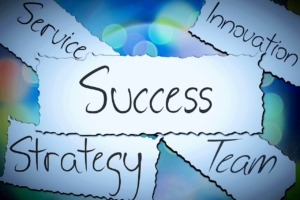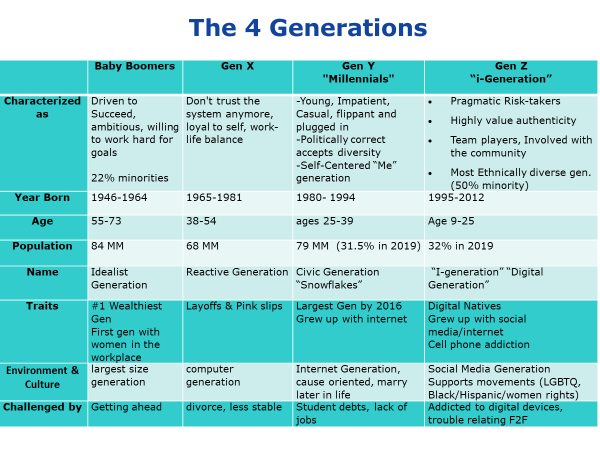Checklist To Create A Hybrid Work Environment Culture
By Patty Crabtree
“I just want everyone back at the office and let’s just get back to normal,” many a business leader has said.
But let’s face facts: the old ways of business will never really happen again. That train has left the station, that ship has sailed.
During the pandemic businesses have been exposed to the possibilities of remote work. Many workers found it to be liberating as they were no longer tied to that commute or the rigid nine-to-five schedule. Now that we have seen what is possible, how can we capitalize on it and develop that world class service?
Here is a surprising statistic: If given the choice between a $30,000 raise or permanently working from home, employees at some of the biggest companies said they would choose the latter. LinkedIn News, citing a survey by professional network Blind, reports 64% of respondents would forgo the extra cash for the remote work benefits. About 67% of Google respondents preferred permanent work-from-home, as well as 64% of Amazon, 62% of Microsoft, 69% of Apple, 76% of Salesforce and 47% of JPMorgan Chase employees.
“I’m not surprised at all,” said Chelsea Jay-Wiltse, a career coach at Intelligent.com. “The pandemic provided an opportunity for many professionals to reset and rediscover their priorities. Most professionals found working from home provided a better work/life balance, more time with family and friends, and decreased stress levels. Utilizing technology to its fullest extent is the way of the future.”
She offers this prediction: “More employers will need to offer flexible scheduling and remote work options to remain competitive when it comes to attracting talented professionals.”
However, the message we keep hearing at Lighthouse Consulting is businesses want to return to normal, all the peas back in the pod. We are not a fan of this word normal. This word gets thrown around every time something pushes us outside our comfort zone as people crave the known and are afraid of the unknown.
Normal is such a disempowering word. It takes away from the opportunity and encourages things to go to back the same. But a return to normal is just an illusion as our world has changed. With all the opportunities that have occurred, why would someone want to go back to the way things were when there is a possibility of something better?
Déjà Vu All Over Again
Déjà vu is the feeling you have experience something before. For me, I faced this dilemma many years ago as my company faced a staffing crisis. As a small company, our solution was to start building a remote workforce. Through trial and error, we developed a high performing and successful workforce that cultivated a high retention rate of both clients and staff. Our culture of innovation thrived, and collaboration was strong. As profitability increased year over year, we had proof this concept worked.
 As more people are vaccinated and the infection rate is decreasing, the talk is about moving back into the office toward that normal. Many leaders are inferring they will demand everyone return to the office while employees are wanting options. Some want to be able to work remotely a few days a week. Others want to work remotely full time.
As more people are vaccinated and the infection rate is decreasing, the talk is about moving back into the office toward that normal. Many leaders are inferring they will demand everyone return to the office while employees are wanting options. Some want to be able to work remotely a few days a week. Others want to work remotely full time.
Managing A Hybrid Workforce Takes Focus
So, how do you balance this desire for a hybrid-work-environment so it supports everyone’s desires?
Managing a hybrid or fully remote workforce takes a different focus. One word I like to use here is intentional. A more intentional focus on the nuances of a diverse work environment is important to continue a healthy, successful workforce.
Here are some aspects to consider as you plan for continuing a hybrid or remote workforce:
- Culture. How has your culture evolved during this time and how does it need to further evolve to support a hybrid or remote workforce? Do your current core values fit this new environment? Is a fine tuning needed?
- Communication. Have you established a formal communication plan to ensure all messaging is heard by staff? This would include the types of events that can occur throughout the month, who should be included in the communication and what method the communication is expressed.

- Strategy. How have your leaders ensured a focus on both short-term and long-term strategy? What is the long-term vision and plan for the company while embracing a hybrid or fully remote work environment?
- Management. What training has been provided to managers to ensure they effectively supervise the hybrid or remote workers and maintain a high level of productivity and staff retention?
- Customer Service. How has customer service evolved? Has this been an intentional practice or in the moment solution?
- Collaboration. How have you encouraged collaboration in a hybrid or fully remote environment? What tools have been put in place to ensure collaboration continues to thrive?
- Team Building. What hybrid team building activities have been established? Are they scheduled on a regular basis?
- Training. How has ongoing training evolved to support a hybrid or remote workforce?
- Flexibility. Is that nine-to-five work environment really the only effective way for your staff to be successful? Is there an opportunity to provide flexible schedules that support company needs along with a healthy work-life balance for your employees?
- Meetings. What tools have been put in place to facilitate effective meeting and encourage a healthy dialogue?
- Recognition/Engagement. How has your recognition program evolved to be inclusive of both office and remote workers? What is your engagement plan?
- Interviewing. What practices have been put in place to support effective remote hiring?
- Onboarding. Do you have an effective plan to onboard new hires both in the office and remote workers? Does you plan include team building and culture activities?
“The pandemic lockdown only accelerated the work-from-home trend,” says Dennis Consorte, a small business consultant at digital.com. “In a digital age, commuting is a waste of time for many professions. If you work in retail or construction, then sure, you need to show up to do the work. If facetime is important to company culture, then businesses should consider rotating schedules where staff visits home base once a week. The key is in measuring the value that people provide, rather than the hours they work.”
Consorte says this mindset eliminates concerns over employees who work fewer hours than their peers, because it’s the value they produce that matters, regardless of how long it takes. “Work-from-home rewards workers with hundreds of more hours of personal time each year, making for a better work-life balance, and happier employees produce better results,” he adds.
 Developing a successful and lasting hybrid workforce takes building a new muscle. A muscle of enhanced communication, unique team building approaches, leaders driving the conversation and showing the way with a new focus and creating an offering that is attractive to existing and potential employees along with ensuring your customers continue to feel valued.
Developing a successful and lasting hybrid workforce takes building a new muscle. A muscle of enhanced communication, unique team building approaches, leaders driving the conversation and showing the way with a new focus and creating an offering that is attractive to existing and potential employees along with ensuring your customers continue to feel valued.
This is like any new strategic initiative. Being strategic takes planning, focus, communication and accountability to implement and thrive.
If you are open to a conversation about any of these aspects of creating a hybrid work environment culture, please call or email and we will set up a time to talk.
Permission is needed from Lighthouse Consulting Services, LLC to reproduce any portion provided in this article. © 2022
Patty Crabtree is a Senior Consultant at Lighthouse Consulting Services with 25 years of operations and finance leadership experience. Her phone number is 310-453-6556, ext. 410 and her email is pattyc@lighthouseconsulting.com.
Lighthouse Consulting Services, LLC provides a variety of services, including in-depth work style & personality assessments for new hires & staff development. LCS can test in 19 different languages, provide domestic and international interpersonal coaching and offer a variety of workshops – team building, interpersonal communication, stress & time management, sales & customer service training and negotiation skills as well as our full-service Business Consulting Division.
If you are open to a conversation about how our in-depth work style and personality assessment could help your team, including pricing and the science behind the tests, please contact us at 310-453-6556, extension 403.
For more information, please visit our website, www.lighthouseconsulting.com to sign up for our Open Line webinars and monthly Keeping On Track publication or to order the books, “Cracking the Personality Code”, “Cracking the Business Code” and “Cracking the High-Performance Team Code”. If you would like additional information on this topic or others, please contact your Human Resources department or Lighthouse Consulting Services LLC, Santa Monica, CA, (310) 453-6556, dana@lighthouseconsulting.com & our website: www.lighthouseconsulting.com.


 The humor illustrated how much unproductive time employees typically spend at an office. The management challenge is to maximize productivity for the hours the employees work. Or is it?
The humor illustrated how much unproductive time employees typically spend at an office. The management challenge is to maximize productivity for the hours the employees work. Or is it?
 Commuting to and from work can be a huge productivity drain and a distraction to one’s day. Think about all those who were walking into the office frustrated, unwinding with a cup of coffee and venting about the person who cut them off. Instead of the driving hassles, remote staff can take a short walk from the kitchen to the home office. They can feel more energized at the start of the day, have a better focus and achieve more success. They also experience a better life-work balance which brings more engagement.
Commuting to and from work can be a huge productivity drain and a distraction to one’s day. Think about all those who were walking into the office frustrated, unwinding with a cup of coffee and venting about the person who cut them off. Instead of the driving hassles, remote staff can take a short walk from the kitchen to the home office. They can feel more energized at the start of the day, have a better focus and achieve more success. They also experience a better life-work balance which brings more engagement.


 Regardless of the status of the current information technology, that is utilizing an existing system or entering into the selection process of a new one, it is essential that the TOM and value to be derived are clearly defined. That is, just how will we as an organization measure the ERP value and, equally important, how will our customers measure us to decide if we are in fact successful in implementing our strategy. In addition to this measurement is the strategic plan. It must be reflective of where we want the business to be and how we will measure our success.
Regardless of the status of the current information technology, that is utilizing an existing system or entering into the selection process of a new one, it is essential that the TOM and value to be derived are clearly defined. That is, just how will we as an organization measure the ERP value and, equally important, how will our customers measure us to decide if we are in fact successful in implementing our strategy. In addition to this measurement is the strategic plan. It must be reflective of where we want the business to be and how we will measure our success.
 “Your prospects are talking, but are you really listening?” asks Stiehl, a human-factors-engineer by training who has worked for the Cadillac division of General Motors, Cisco System, Pacific Gas & Electric, Cisco Systems, and even the Nuclear Regulatory Commission.
“Your prospects are talking, but are you really listening?” asks Stiehl, a human-factors-engineer by training who has worked for the Cadillac division of General Motors, Cisco System, Pacific Gas & Electric, Cisco Systems, and even the Nuclear Regulatory Commission.
 Identify the issue. What is on their mind? What is their goal, what assets do they have in place, and what are their roadblocks? Ask questions to find out and listen carefully.
Identify the issue. What is on their mind? What is their goal, what assets do they have in place, and what are their roadblocks? Ask questions to find out and listen carefully.
 Lighthouse Consulting Services LLC offers custom market research specializing in understanding customer wants, needs and requirements. We have designed and implemented one-on-one in-depth research studies, surveys and quantitative studies across a similar range of internal (employees) and external (customers) audiences. And sometimes we even conduct focus groups.
Lighthouse Consulting Services LLC offers custom market research specializing in understanding customer wants, needs and requirements. We have designed and implemented one-on-one in-depth research studies, surveys and quantitative studies across a similar range of internal (employees) and external (customers) audiences. And sometimes we even conduct focus groups. recruitment effort. To this I’ll add a note about using an executive search firm. Companies frequently make two mistakes in this area. According to Barry Deutsch, Founder of
recruitment effort. To this I’ll add a note about using an executive search firm. Companies frequently make two mistakes in this area. According to Barry Deutsch, Founder of  aren’t investing enough time in preparing for the interview,” he said. He advises his clients to first set the right expectations for the job and make everyone involved in the interview aware of the job’s expectations. “This goes hand in hand with a detailed job description. What is the position expected to know and to accomplish, and by when?”
aren’t investing enough time in preparing for the interview,” he said. He advises his clients to first set the right expectations for the job and make everyone involved in the interview aware of the job’s expectations. “This goes hand in hand with a detailed job description. What is the position expected to know and to accomplish, and by when?” can do the job as expected. Fortunately, online skills tests exist for hundreds of common jobs from Accounting to Manufacturing to Software Programming.
can do the job as expected. Fortunately, online skills tests exist for hundreds of common jobs from Accounting to Manufacturing to Software Programming.
 competitive organization through better hiring. Reach out to me any time to get started.
competitive organization through better hiring. Reach out to me any time to get started. 





 On the upside, the testing procedure that a company follows can send a message to candidates that the company leaders are serious about who they hire. Successful people want to work with other successful people. In many cases, the candidate may accept a position from the organization they perceive to be more thoughtful during the hiring process.
On the upside, the testing procedure that a company follows can send a message to candidates that the company leaders are serious about who they hire. Successful people want to work with other successful people. In many cases, the candidate may accept a position from the organization they perceive to be more thoughtful during the hiring process.

 What is the payoff to a manager for developing connected relationships with employees using personality assessments? Here are three good benefits. First, it enables the manager to better anticipate what roadblocks might occur with a worker, and what to try to reduce this resistance. Second, understanding where employees are coming from will help you plan out how much participation you need from them, and will give some clues as to how change should be communicated to them. Third, building connected relationships builds commitment and loyalty.
What is the payoff to a manager for developing connected relationships with employees using personality assessments? Here are three good benefits. First, it enables the manager to better anticipate what roadblocks might occur with a worker, and what to try to reduce this resistance. Second, understanding where employees are coming from will help you plan out how much participation you need from them, and will give some clues as to how change should be communicated to them. Third, building connected relationships builds commitment and loyalty. So, how do you determine if harmony and collaboration truly exist within your team? More importantly – and perhaps more terrifying – what if they don’t exist, and you are part of the reason? You do this by listening to your colleagues and direct reports, with a commitment to change if necessary. You run through the gauntlet of the infamous 360 assessment.
So, how do you determine if harmony and collaboration truly exist within your team? More importantly – and perhaps more terrifying – what if they don’t exist, and you are part of the reason? You do this by listening to your colleagues and direct reports, with a commitment to change if necessary. You run through the gauntlet of the infamous 360 assessment.